Spotlight
Elder William R. Walker Gives Keynote at 19th Annual Conference
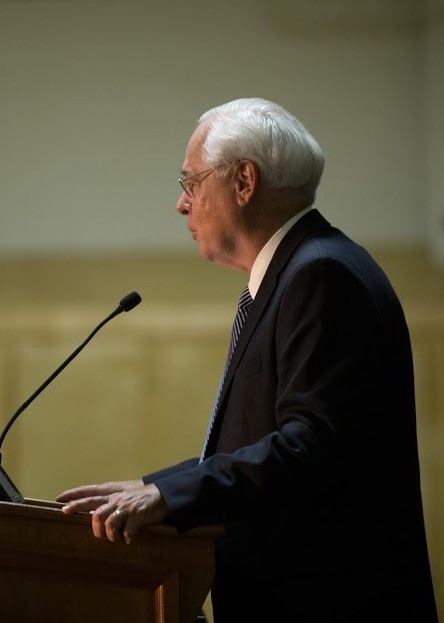
Elder William R. Walker, an emeritus General Authority of The Church of Jesus Christ of Latter-day Saints, gave a keynote address to hundreds of attendees at Southern Virginia University’s 19th annual Education Conference last week.
Just prior to Elder Walker’s address, Kathleen Knight, who recently received an honorary doctorate from Southern Virginia, introduced the theme of the conference, “A House Unto His Name.” She related how her choice of this year’s theme was inspired by an experience she had while serving in the Washington D.C. Temple.
“Temples represent the ultimate in our theology,” Knight said. “Temples are symbols of God’s presence on the earth, [and they] remind us that our lives are eternal. [They are] the Lord’s university. He does the teaching [there].”
Elder Walker was first called as a General Authority of the Church in 2002, and he served as the executive director of the Temple Department for the Church from 2007 to 2014. During his service in the Temple Department, he planned the construction and renovation of over 50 temples worldwide, with more than 15 being dedicated during this time.
He related an experience he had meeting a woman in Micronesia, who had traveled to the temple for her own endowment eight years previously and had not been able to return since then. Walker explained that this woman was able to attend the temple because of the Church’s Temple Patron Assistance Fund — a fund which helps members of the church in remote parts of the world visit the temple for their own ordinances — and he invited conference attendees to contribute to this fund.
“‘It was the highlight of my life. Now I have the temple in my heart,’” Elder Walker said, quoting the woman. “The orientation of our lives toward the temple should be what every one of us seeks for.”
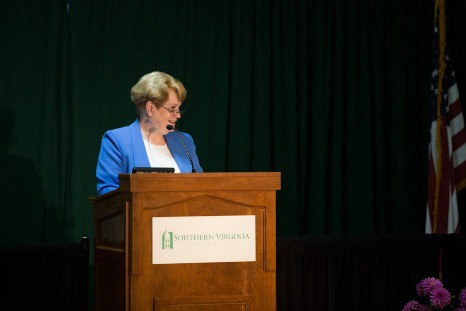
Elder Walker’s wife, Vicki Walker, also spoke, sharing her observations of President Thomas S. Monson during numerous temple dedications. At one dedication she observed an elderly lady in a wheelchair trying to see President Monson over the crowd. Monson also noticed the woman, and went directly to her.
“He [has] a unique way of picking out the lonely, or the ones who really made a sacrifice to get to the dedication,” Sister Walker said. “He’d go over and lovingly put his hand on them.”
The conference also featured Dr. Anthony Sweat, an assistant professor of church history and doctrine at Brigham Young University; Robert Boyd, a temple photographer, and his wife, Eleah Boyd; Kent and Kathryn Colton, the president and matron of the Washington D.C. Temple; Jenny Oaks Baker, a Grammy-nominated violinist; and Michael Enfield, who worked for the Church Temple Construction Department for over 20 years.
Sweat gave two doctrinal presentations focused on the temple. His first presentation, titled “Approaching the King,” examined the doctrine of why Latter-day Saints perform endowment ordinances.
“If we will understand the why, then we will gain power in our obedience,” Sweat said. Quoting Boyd K. Packer, he added, “‘That’s why true doctrine, understood, changes attitudes and behavior.’”
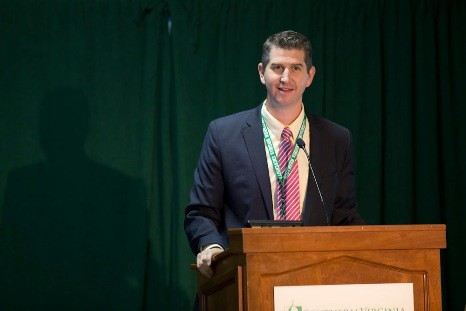
Sweat shared several passages of scripture from the Doctrine and Covenants that describe God promising to visit temples. He compared temple worship to the experience of approaching a European king, which involved undergoing the correct steps of preparation and being instructed in the qualifications for a visitor to enter the king’s presence.
“This is the doctrine of the endowment, as taught by Joseph Smith,” Sweat said. “Endowment means to be brought into the presence of God. That’s really what the fundamental, historical meaning of the word is. It is a gift, it is a bestowal… and part of the endowment is a bestowal of covenants, but above all it’s a bestowal of witness. It’s a bestowal of coming into God’s presence.”
In his second presentation, Sweat discussed the law of consecration and its modern application, making the distinction between consecration, having all things common and the united order. He said that many Latter-day Saints confuse consecration with other practices, and think, as a result, that the law is not in practice today, but he quoted Gordon B. Hinckley and others to teach that consecration is an eternal law.
“The law [of consecration] is fully in effect, though the application of it may change from season to season,” he said. “Consecration is essential to approaching God.”
Sweat explained how consecration connects to principles of God’s ownership of everything and man’s stewardship, agency and accountability to represent God’s will. He concluded that a modern application of consecration is guided by the teachings of living prophets, including tithes and fast offerings, holding Church callings and participating willingly in service.
“What stops us from living the law of consecration today?” Sweat asked. “Nothing.”
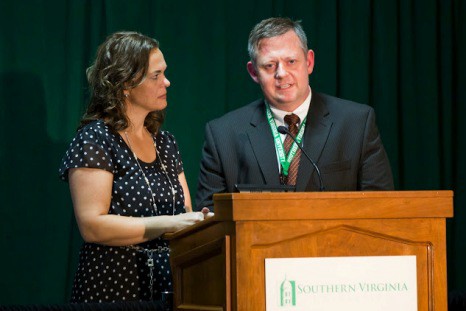
Robert and Eleah Boyd began their presentation by discussing some of the personal significance the temple has come to have for them. Together, they described their struggles with infertility and the “celestial presence” they finally felt when their first son was born. Their son, however, was born prematurely and with severe complications. He passed away within two months.
“We didn’t want to go home. It was kind of empty there,” Robert Boyd said.
“[So] we would go to the temple, and that started our great love for attending the temple,” said Eleah Boyd. “Because when we were there, it felt like being in that same great presence.”
The temple’s significance in their lives deepened as they had two more children and adopted three others, going with their children to be sealed in the temple. Eventually Robert Boyd felt prompted to leave his successful career as a wedding photographer, focusing his photography on temples instead. This involved long and frequent road trips to temple locations, on which his entire family would accompany him.
“The most amazing miracle that has happened is that we have developed a great love for the temple, as individuals, as a couple and even as a family,” Eleah Boyd said.
Both Robert and Eleah Boyd expressed how doubts and troubles sometimes persist through multiple visits to the temple, but that returning repeatedly has brought them the most rewarding answers and experiences.
“My greatest desire is to see all the people that I love… partake of the amazing power and healing that’s available in the Lord’s house,” said Eleah Boyd.
Sister Colton began her address by stating that temples have existed throughout time to reflect God’s glory and to provide for covenants and sealing power. She described how baptism binds disciples to Christ, and how temple sealing then binds disciples to each other.
“There’s something basic and innate in all of us to want to be connected to those we love,” she said. “We call this connection in the temple the binding and sealing power. It is the ability … to be connected eternally to those we love. It is built in us to want this connection.”
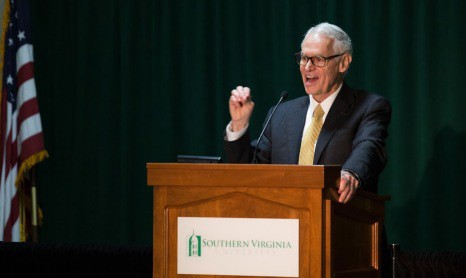
Sister Colton also described the change of heart that temple worship facilitates, including learning to “make meaning” of trials and problems. She told the story of one woman who felt too broken to trust God, but who found new peace replacing her anger during her temple attendance.
“‘I could put all my trust in the Lord. And I mean all my trust, holding back nothing,’” Sister Colton quoted the woman as saying afterward. “‘I have grown beyond my sorrow.’”
President Colton, a former professor at BYU and MIT and a member of Southern Virginia’s Board of Trustees, taught the principles of gaining power from temple worship, and how the temple ultimately points disciples’ lives toward Jesus Christ.
“Undergirding and overarching all the rest is the… principle that temples, both old and new, are about Jesus Christ and His atonement,” he said. “The basis of every ordinance and covenant in the temple is the atonement of Jesus Christ.”
Baker performed numerous Latter-day Saint hymns and other inspirational pieces of music. Before performing her cover of “Everybody Hurts” by REM, for which she recently released a music video filmed at Southern Virginia University, she explained how this song reflected her awareness that everyone faces personal loneliness and pain.
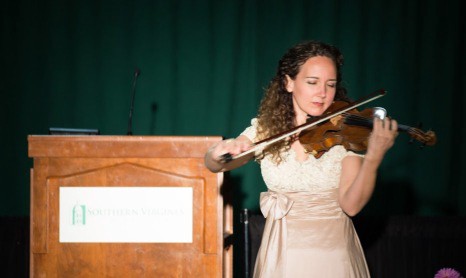
“[But] everybody heals through the atonement of Jesus Christ,” she said.
Enfield shared his unique perspective as a construction worker on numerous temples. He first became involved in temple construction when his business won a bid to build the visitors’ center for the Washington D.C. Temple. A self-proclaimed “temple nomad,” his family soon relocated for him to work on the Seattle Washington Temple.
Enfield was deeply involved in the process of designing and building numerous small temples, facilitating faster construction and greater worldwide access to temples.
“[We were told] to design a [temple of] 6,000 feet or less, that cost a million dollars or less, and [would] take a year or less to build,” he said. “[So] we had to change our protocols and our paradigms about how to build temples.”
In addition to supervising the construction of the Portland Oregon and Atlanta Georgia Temples, Enfield supervised the transition of the Vernal Utah Tabernacle to a temple. He related the experience of a man from Vernal who was promised in his patriarchal blessing that he would work on a temple during his life, but who died without seeing this promise fulfilled.
“The man said, ‘Here I am about to die, and I’ve never had that chance. All I got to work on was the old Vernal tabernacle.’ So he got his chance,” Enfield said.
The conference ended with several testimonials on the temple and concluding remarks from Elder Walker. Audio recordings of the speeches are available at soundcloud.com/svuedu.
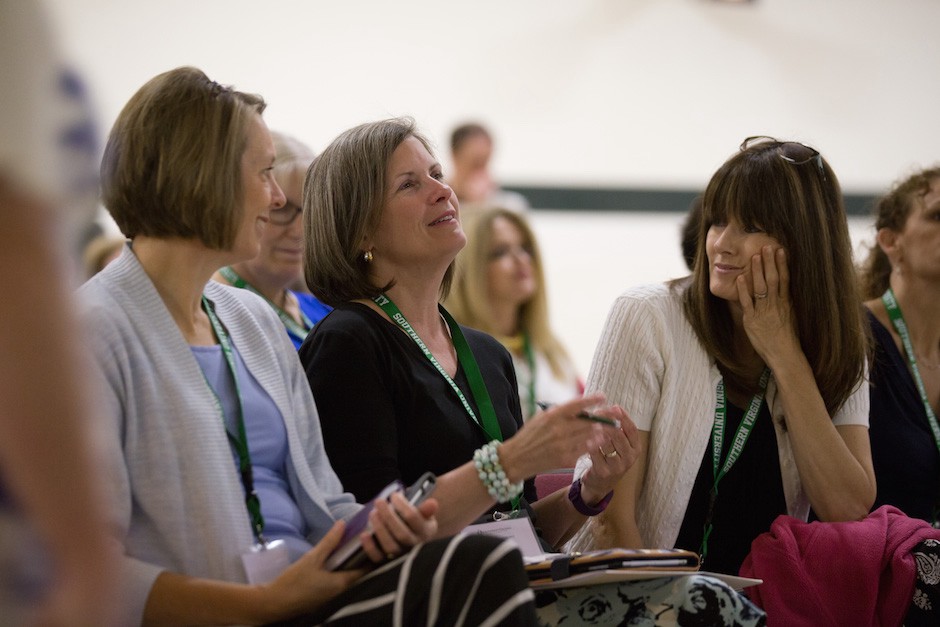
 News
News